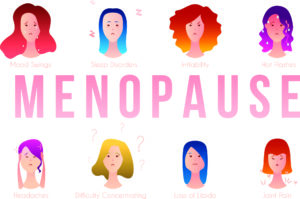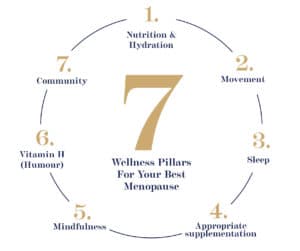Seven Wellness Pillars For Your Best Menopause
Navigating the symptoms of perimenopause, menopause and post-menopause presents a complicated soup in many ways but in other ways, it’s surprisingly simple.
Taking charge of the frustrating, and at many times darned overwhelming symptoms that sometimes raise their heads leads back to how we live our lives. Flexible thinking and changing a few of our ways helps us take control naturally and safely.
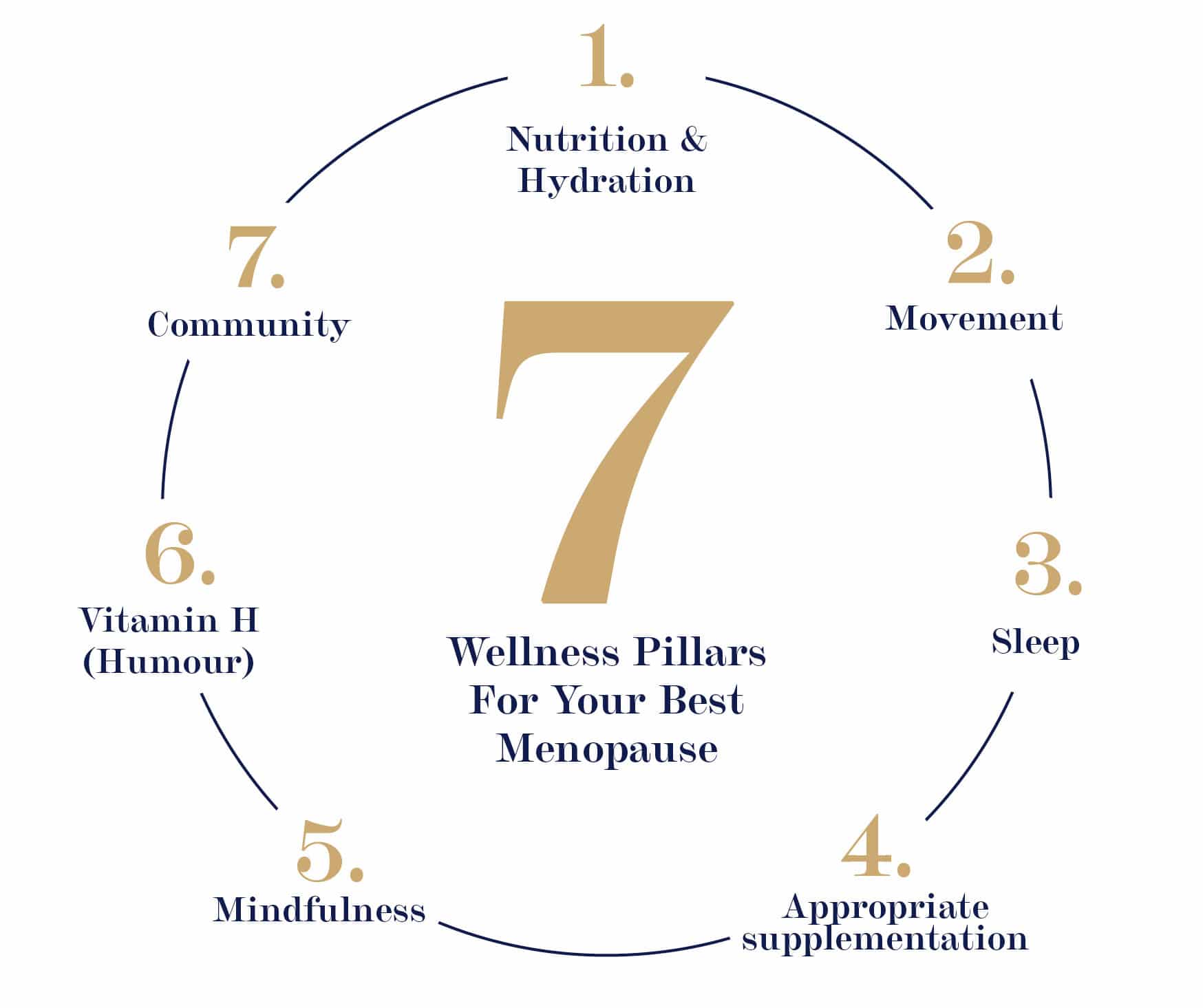
Table of Contents
1.
Nutrition & Hydration
These two are key! We are what we eat (absorb) and as we enter the menopausal years the dietary choices we make are crucial. The food we choose can help guard against health conditions we become more vulnerable to post-menopause. Studies undertaken in the UK show many women in midlife don’t have optimum levels of nutrients. Part of this can be because we don’t absorb nutrients as well. Part of it can be due to changes in our digestive processes – gut health can sometimes impede nutrient absorption. And part of it can be due to dietary practices. These include eating a diet that isn’t nutrient-dense or trying to get rid of menopausal weight gain by starving ourselves.
However, if you follow our guidelines and focus on becoming the proud owner of a nutrient-powered body you should find your weight either stays nice and steady or moves back into balance and any menopausal symptoms you have diminish.
Eat The Rainbow
Eating the rainbow and the alphabet (a=apple, b=berries, c=carrot) is a simple way to spotlight the best way to eat. Created for children it serves adults just as well. Evidence shows that a whole foods plant-based regime – a Mediterranean-style diet – is your best bet. Abundant in fresh fruit and vegetables it’s accompanied by good quality lean proteins and healthy fats. Women who eat this way have been found to experience fewer menopausal symptoms. They also have a lower risk of heart disease, diabetes and some cancers. Eating for bone health is vital too. Females become susceptible to the bone-weakening disease of osteoporosis at a rapid rate post-menopause. Calcium is key here. While the go-to is often dairy products, some mature women don’t tolerate dairy as well. In fact, studies have shown that larger consumption of dairy leads to increased bone fracture risk. Therefore it’s good to know green leafy vegetables are a wonderful calcium source.
To clarify, whole foods means food that hasn’t been tampered with by man. Plant-based refers to fruit and vegetables with limited meat and dairy foods. In countries where a Mediterranean diet is the norm their main source of protein is legumes rather than dairy, and meat is consumed infrequently. The focus is on colourful fruit/vegetables, complex carbohydrates like root vegetables, oats and whole grains and good fats like avocado and extra virgin olive oil (EVOO).
Kicking processed foods, sugar, refined carbohydrates, caffeine and alcohol to the curb is also imperative. These have been linked to sleep disruption, hot flushes, mood swings and weight gain. And sugar and refined carbohydrates (which convert to sugar) cause blood sugar imbalances and insulin resistance, both of which encourage the body to store fat.
The Gut Factor
As more research has come to light it’s become evident that most things to do with our wellbeing lead back to the gut. Our health, immunity, mental health, hormonal balance, skin condition and weight. All can be improved by a healthy gut microbiome.
The gut is home to trillions of bacteria, viruses and fungi, far more than we have cells in our bodies. And the key to ‘good guts’ is a healthy balance of both good and bad bacteria. Prescription medications, stress, processed foods and inactivity can play havoc with this balance but it is possible to heal.
Try these steps to good gut health:
- Reducing stress
- Sleep well
- Keep hydrated
- Chew food well
- Take a prebiotic or probiotic daily
- Embrace fermented foods like pickled ginger, sauerkraut, kimchi, kefir, apple cider vinegar and kombucha
Keep It Simple
Replace ‘diet’ with ‘health’ in your vocabulary. Move your attention from low carb, keto or the latest fad and focus on health and eating ‘real food’. Become a nutritarian and make optimal nutrition the goal.
One other tip? Eat during a 12-hour window and close the kitchen once you’re done.
We like using the PPFF guideline: phytoestrogens, protein, fat and fibre. In addition to the Mediterranean diet, it’s great guidance for 40+ women. You can read all about it here.
Drink To Your Health With H20
Water is essential to practically every bodily process. It also helps with many symptoms such as constipation, bloating, headaches, migraines, brain fog and concentration.
Did you know our bodies are made up of between 60-75% water? With that much going on it’s no surprise that water can be our friend or foe. Too little can cause headaches and fatigue so how much should we drink.
Water needs are highly individual. The general recommendations are 2.2 litres (9 cups) per day for women. That’s an average statistic because lots of things play a part. For example, if your diet is high in fresh fruits and green leafy veggies approximately 20 percent of daily water needs are met through diet.
The quality of the water you’re drinking is just as important as the quantity so choose pure, filtered water. Invest in a water filter at home and use reusable stainless steel or glass water bottles.
Water Facts
- The human body is approximately 2/3 water.
- The human brain is approximately ¾ water.
- Blood is approximately 85% water.
- We lose about 2.5 to 3 litres of water daily via perspiration, breathing and going to the loo.
The Benefits of Drinking Your H20 Quota Daily
- Contributes to good gut health
- Keeps pooping regular
- Helps with weight management
- Boosts mental clarity
- Ups your energy
- Gets skin glowing
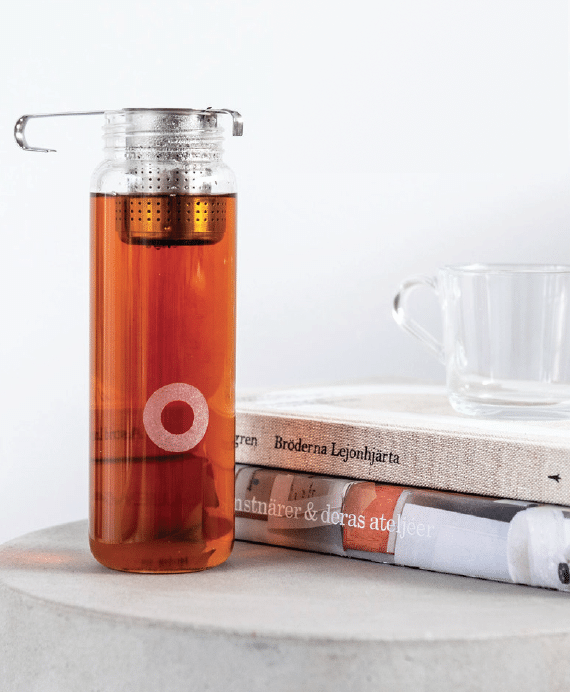
2.
Movement
Moving the body is important for hormone balance as well as mental wellbeing and weight management. But not everybody likes to exercise.
If the thought of hitting the gym makes you cringe, think about what movement you do like. Dancing? Swimming? Cycling? Tennis? Walking in nature? Riding your bike? Vacuuming? Washing the car? Walking around the mall?
Even if it’s not formally acknowledged exercise it all counts. And it’s not just about cardiovascular types of body movement either, weight-bearing exercise is vital for women and essential for bone health after menopause.
Four Forms Of Exercise To Focus On
Try to incorporate cardiovascular, resistance, flexibility and/or co-ordination training into your regime 30-60 minutes daily.
Cardiovascular
Cardiovascular refers to any exercise that raises your heart rate like walking, running, cycling, swimming, jumping rope and HIIT.
Resistance
Weight training uses resistance to strengthen muscles. These could be dumbbells, weight machines, your body weight (as in yoga) or water bottles. Some form of this is crucial for 40+ women as it helps strengthen bones.
Flexibility
Flexibility involves stretching to help keep a good range of motion and fluid joints.
Balance
Balance/coordination exercises help us maintain good balance and prevent falls.
The first two are on most people’s lists. However, in midlife flexibility and balance exercises should have a level of priority too. Yoga, Pilates and Tai Chi all fit the bill well here.
From a mental health point of view, anyone who is an avid exerciser knows it can deliver an instant feel-good factor. The body releases neurochemicals like endorphins, serotonin and dopamine as we exercise.

These trigger a feeling of wellbeing, curb appetite and reduce stress, anxiety, depression. Plus the increased blood flow stimulates our brain cells encouraging great mental clarity and alertness. And all that energy burned? It just might – and almost definitely will – improve your sleep.
Indeed, all forms of movement present significant benefits for our brains, our bodies, our pelvic floor, and our quality of life.
If you don’t have a regular exercise routine start slowly. Walk around the block a couple of times a week. Or do some online exercise at home.
There are a wealth of choices on YouTube such as Yoga With Adriene, or Walk At Home with Leslie Sansone.
3.
Sleep
In 2017, the US Centers for Disease Control (CDC) published scientific reports on the sleep quality of menopausal women.
- They found sleep problems increase during perimenopause (the late 30s to 40s). More than half (56 percent) of women studied slept less than seven hours per night.
- The findings also showed that nearly a quarter of women in perimenopause reported having trouble falling asleep. Thirty percent had trouble staying asleep.
- Nearly 50 percent of women in perimenopause awoke still feeling tired.
- Once women transitioned to post-menopause this tended to improve but it wasn’t the case for all.
- The CDC found that 40 percent of women in post-menopause slept less than seven hours per night. Twenty-seven percent struggled to fall asleep, and 35 percent found it difficult to stay asleep and insomnia became more common.
The Circadian Rhythm
Humans have 24-hour circadian rhythms modulated by light and dark.
A tiny pea-sized glandule called the pineal gland sits in the middle of our brain. It’s inactive during the day but as darkness falls it begins to secrete the hormone melatonin. Melatonin helps calm the brain and counter the stress hormone cortisol. It also signals the brain that it’s time to think about slumber when it begins producing around 9pm.
For ideal sleep, melatonin levels should rise and cortisol levels should lower until daylight. This is when the pineal gland becomes inactive again and waking cortisol is produced.
However, with the advent of electricity, our natural circadian rhythm has altered. Sleep is disturbed if we’re exposed to bright light at night and the release of melatonin is inhibited. Noisy environments can cause cortisol to elevate and heavy meals requiring active digestive processes can also cause disruption.
Many of us:
- eat at a later hour
- look at lit screens constantly
- are busy ‘doing’ from morning to night
- head to bed at a late hour
Add to that high or chronic low-grade stress and it creates a perfect storm for sleep disruption.
A lack of sleep can contribute to:
- Lack of alertness
- Energy loss
- Brain fog
- Loss of libido
- Forgetfulness
- High blood pressure
- Depression
- Irritability
- Premature ageing of the skin
- Increased likelihood of car accidents
- Weight gain
Click here for: Sleep loss and weight gain.
The good news is that by making small changes you can improve your sleeping story.
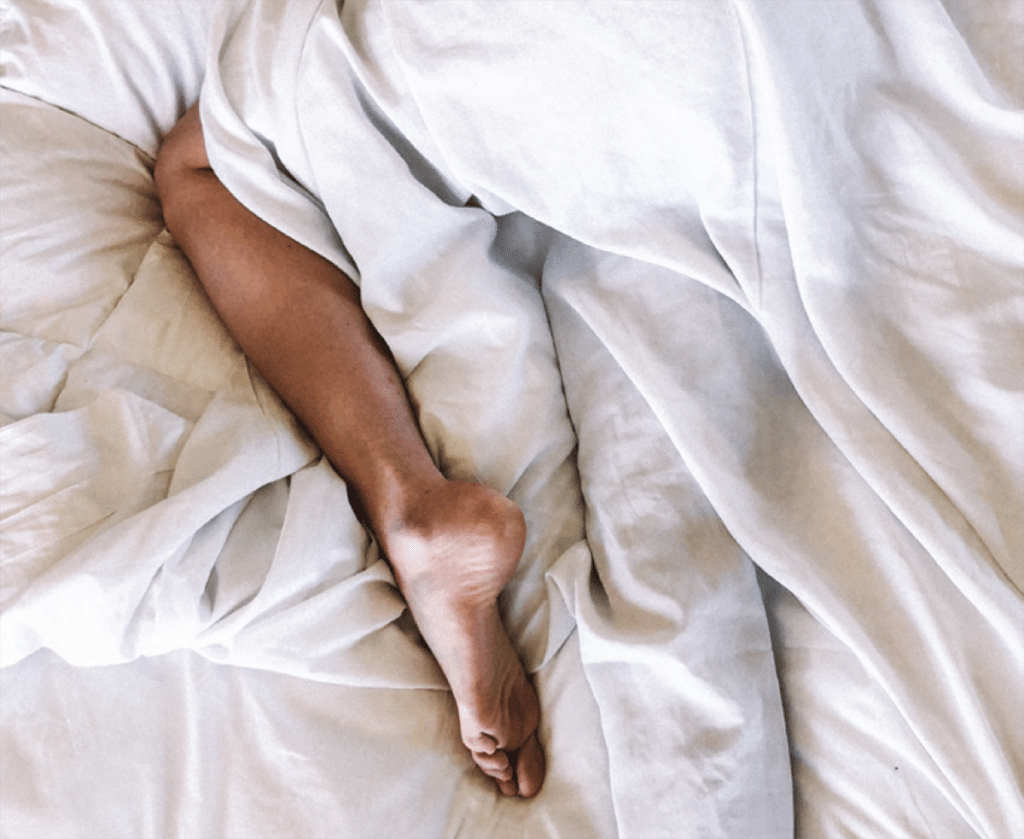
4.
Appropriate Supplementation
Every. Body. Is. Different. And so are our needs. But remember you can’t fix a bad diet with supplements. In our experience, though practically every 40+ women can benefit from a good quality vitamin B complex (particularly B6 and B12), a probiotic, essential fatty acids, vitamin D3, and zinc. And of course MenoMe 40+ or 55+.
We’ve given you a complete rundown of supplements in section 10.4 here.
5.
Mindfulness

What is mindfulness and why is it so good for me?
Mindfulness is the practice of being fully present at the moment. It ensures we’re aware of exactly what is going on around us. This awareness is encapsulated with a sense of calm – no judgement or reactivity.
Just press pause.
There’s no magic potion or crazy technique. It’s simply an awareness of self.
Though mindfulness is innate to humans many of us don’t practise it. Instead, we run on autopilot. Our minds racing and often over-reacting to various situations.
Menopause & Mindfulness
Science has proven this practice can help reduce the signs of menopause – especially perimenopause – such as hot flushes and mood swings.
A study by the Mayo Clinic in January 2019, asked nearly 1750 women aged 40 to 65 over two years (2015/2016), about their menopausal signs, stress levels and mindfulness.
The results showed that those who practised mindfulness experienced less irritability, depression and anxiety.
“These findings suggest that mindfulness may be a promising tool to help women reduce menopausal signs and overall stress,” said the study’s author, Dr Richa Sood.
The Art Of Mindfulness:
- Take your mind off automatic pilot and permit yourself to let go of all the stress, worry and information running around in your head.
- Stay connected to the present moment.
- Enjoy the zen.
- Practice anywhere: sitting down, walking, while you’re driving, eating breakfast, doing the ironing, brushing your teeth.
We recommend taking 15 minutes a day.
Meditation encourages mindfulness. Try the Clarity app designed for women in menopause. Headspace, Calm and Insight Timer are all good companion apps too.
“It’s evidence-based. We don’t have to take mindfulness on faith. Both science and experience demonstrate their positive benefits for our health, happiness, work, and relationships.”
mindfulness.org
6.
Vitamin H (Humour)
One of the tricks to getting through challenges and changing life situations with aplomb is employing humour! Or, as we refer to it, a healthy dose of vitamin H.
They say “laughter is the best medicine”. And it is. Strong medicine. That’s why we call it vitamin H (vitamin humour). It boosts our immunity, reduces pain, burns calories, protects the heart and helps us manage stress.
There’s no denying that the symptoms of perimenopause, menopause and post-menopause can present a life challenge for approximately 80 percent of women. So sometimes we’ve got to look on the bright side to put our best foot forward. Norman Cousins demonstrated the power of vitamin H when he discovered Laugh Therapy while struggling with a severe illness. He laughed his way back to health via funny movies and books.
And you can too. We live in a time of rich abundance when it comes to inspiration. We’ve shared 3 Movies That Make You Feel Better About Menopause that’ll make you smile and you’ve got to love this skit from The Baroness von Sketch Show. Laugh out loud books, YouTube and Podcasts abound for you to choose something that appeals to your brand of vitamin H.
Whichever way you choose to laugh, humour’s a wonderful way to navigate the twists and turns of the menopausal transition.
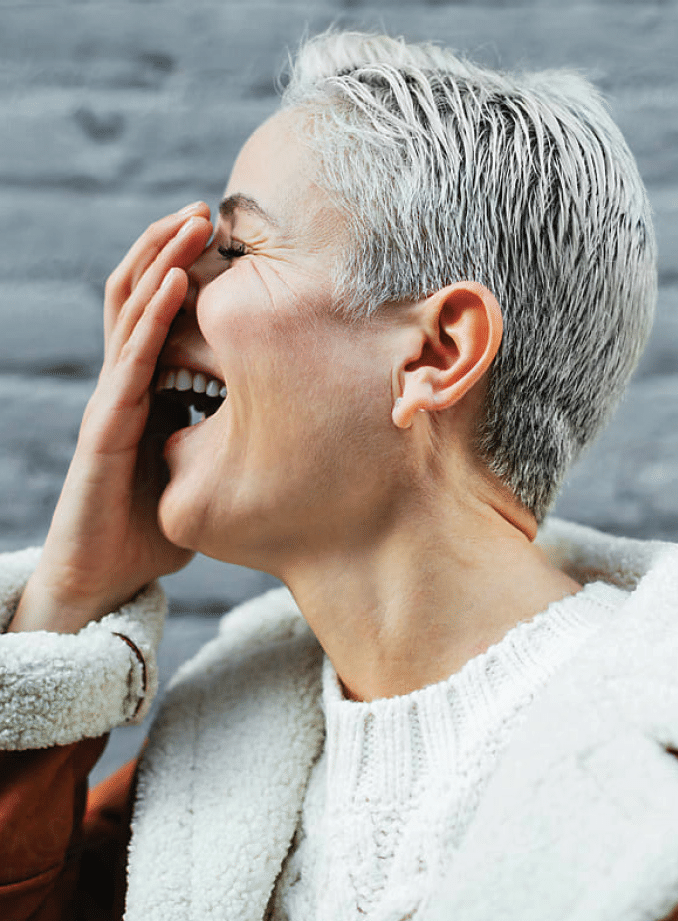
7.
Community
One of the key factors for a happy, healthy life – and therefore a happy, healthy pre-, peri- and post-menopause – is interaction. Social connection.
By this, we mean interactions with our fellow humans. Our families, friends, work colleagues and acquaintances are all food for our souls.
Female mid-lifers, especially, need the energy we get from other people. We thrive thanks to the support and understanding of others acting as a sounding board.
In fact, science has shown us this over and over again.
The Roseto Effect
There’s a small town in the US state of Pennsylvania called Roseto. A group of Italian immigrants settled here in the 1950s. As we know, Italians are famous for their hospitality and sense of community. Large extended families and friends gather around their dining tables for shared meals. Plus it’s common to see a group of friends sharing a glass of wine or enjoying a card game in their local piazza.
When a local doctor met Dr Stewart Wolf, the head of medicine at the University of Oklahoma, they discussed how healthy the Rosetan population was. In particular, they are known to have an extraordinarily low rate of heart disease. And that’s in spite of them smoking cigars, cooking in lard and living on stodgy pizza, pasta and large quantities of wine.
Dr Wolf went on to lead several studies on the phenomenon through the 1960s. He and his team attributed Rosetan’s robust health to the fact that nobody was ever lonely. They experienced no stress, looked up to their elderly and everyone lived very close together.
And that’s the power of community for your health and happiness.
That’s why we’ve created the 40+ Ageless Goddesses private Facebook group. Come and join us here.
Disclaimer: Our articles are for information only and intended to educate from a holistic point of view. They should not take the place of medical advice. Certain diet and exercise practises may be beneficial for the majority of people but could have potential risks for others. If you are contemplating lifestyle changes or you have ongoing concerns please consult your healthcare provider.


